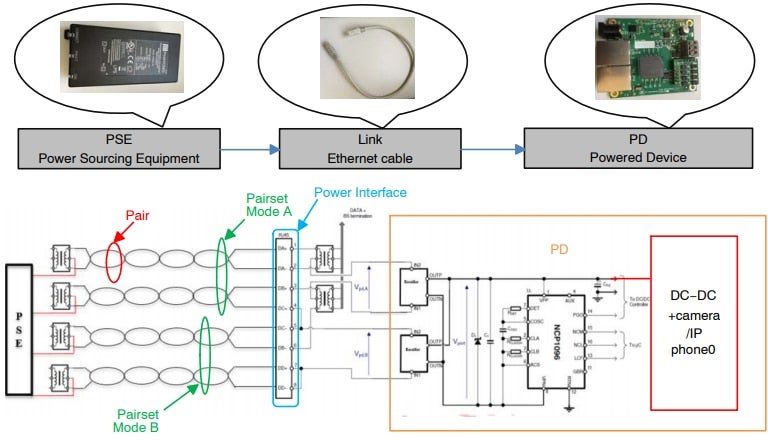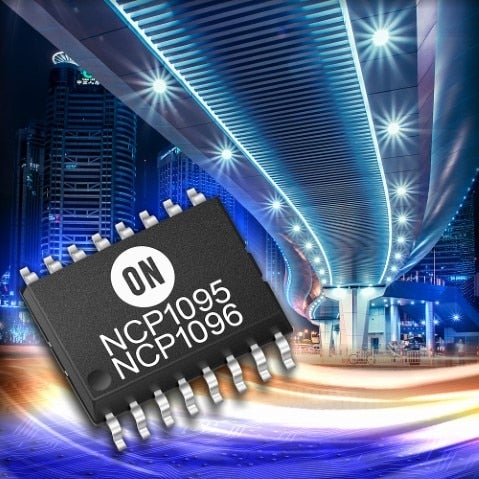For many applications within industrial IoT including connected lighting, Power over Ethernet (PoE) is a preferred technology that provides safe, reliable power transfer between Power Sourcing Equipment (PSE) and a Powered Device (PD). The maximum amount of power that can be transferred from the PSE to the PD is defined by IEEE standards for Power over Ethernet, including the latest 802.3bt standard, which supports up to 90 W. The majority of the power transferred to the PD normally goes to a DC−DC converter to supply loads such as a camera or an IP phone. However, not all the power delivered at the PSE output will be available to this load, due to a number of reasons.
Main Components of a Power over Ethernet (PoE) System
First of all, power loss occurs due to the resistance of the Ethernet cable. Additionally, the combined efficiency of the PD’s bridge rectifier and DC−DC converter is typically around 90%. It is important to keep in mind that power is limited in a PoE system.
When designing a powered device, reducing the power loss in the rectification and conversion stage means more power is available. As the power needs for various applications continues to grow, this becomes increasingly important.
Part of ON Semiconductor’s family of PoE-PD solutions, the NCP1096 is capable of delivering up to 100 Watts of power, and enables any device connected to it to be compliant with both the IEEE802.3af/at and IEEE802.3bt standards. The NCP1096 provides all features for a PoE-PD system, including detection and the new auto-classification feature, which allows the PSE to more accurately determine and deliver the exact amount of power needed for the Powered Device.
IEEE 802.3bt Compliant NCP1096 and NCP1095 Controllers
Additionally, ON Semiconductor offers three different PD rectifier topologies in order to reduce power loss: diode bridge, a diode plus MOSFET bridge, and an active bridge using MOSFET transistors.
Diode Bridge
Schottky diodes, such as the NRVTSA4100ET3G Trench Schottky rectifier, can offer improved system efficiency compared to conventional diodes as they have a lower power consumption due to their lower forward voltage.
Diode + MOSFET Bridge
This topology combines diodes and MOSFET transistors such as the FDS89161, which helps provide a balance between rectifier cost and efficiency. In order to drive the MOSFET according to the input voltage and the detection constraint, a circuit using Zener diodes can be used to disable the MOSFET during the detection and classification.
Active Bridge using MOSFET Transistors
This topology uses MOSFETs instead of diodes. The power consumed by a MOSFET transistor operating in its linear region can be represented by the formula (P = rdson* I^2), where rdson is the drain to source on-resistance and I is the current. The voltage across a MOSFET (rdson * I) when the gate to source voltage is high enough is much smaller than the forward voltage drop of a diode. This results in a much lower power loss. The active bridge used is the FDMQ8205A, commonly known as GreenBridge 2, an ON Semiconductor high−efficiency bridge rectifier with the lowest rdson in the market.
By offering compliance with the new IEEE 802.3bt standard alongside a number of impressive PD rectifier topologies, the NCP1096 will help support higher power applications. Learn more about reducing power loss in Power over Ethernet (PoE) systems and how our solutions can assist you in your design needs.


